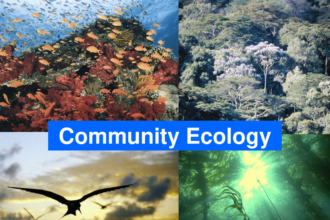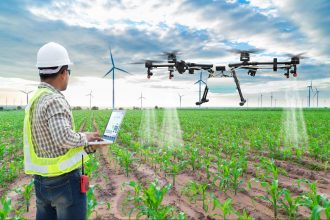Geology, the scientific study of the Earth, reveals the intricate processes that shape our planet’s structure and landscapes. From understanding the formation of mountains to deciphering the history recorded in rock layers, geoscience offers invaluable insights into the Earth’s past, present, and future. This blog explores the essential elements of geology, such as its essential ideas, important procedures, and the importance of geological research.
Understanding Geology
Geoscience is a diverse field that encompasses the study of the Earth’s physical structure, its history, and the processes that have shaped it over time. It involves analyzing rocks, minerals, and fossils to uncover the dynamic history of our planet. By studying geological formations and processes, scientists can reconstruct past environments, predict natural disasters, and explore the resources that support modern life.
Numerous sub-disciplines within the topic of geoscience concentrate on various facets of the Earth’s systems. These include physical geology, which examines the Earth’s materials and processes; historical geoscience, which studies the Earth’s history and the development of life; and structural geology, which investigates the deformation of rocks and the forces responsible for these changes.

Key Geological Processes
The Earth is constantly undergoing various geological processes that shape its surface and interior. Comprehending these mechanisms is essential to appreciating our planet’s dynamic nature.
Plate Tectonics
One of the fundamental concepts in geology is plate tectonics, the theory that explains the movement of the Earth’s lithospheric plates .These plates interact at their boundaries as they float atop the semi-fluid asthenosphere below. The movement of these plates is responsible for many geological phenomena, including earthquakes, volcanic eruptions, and the formation of mountain ranges. Plate tectonics provides a framework for understanding how continents drift and how geological features are formed and modified over time.
Erosion and Weathering
Erosion and weathering are processes that break down and transport rocks and minerals Weathering is the process by which rocks break down into smaller pieces both chemically and physically. Physical deterioration, such as freeze-thaw cycles, causes rocks to fracture. Conversely, chemical weathering entails the modification of minerals via chemical reactions, frequently including acids and water. The movement of these worn materials due to forces like wind, water, and ice is referred to as erosion. When combined, these processes help to produce soil and shape landscapes.
Volcanism
Volcanism is another significant geological process that involves the eruption of magma from beneath the Earth’s surface. When magma reaches the surface, it cools and solidifies to form volcanic rocks. Volcanic eruptions can vary in intensity, from gentle lava flows to explosive events that release ash and gases. Volcanism plays a crucial role in shaping the Earth’s surface, creating new landforms, and influencing climate patterns.
Sedimentation
Sedimentation is the process by which sediments are deposited and accumulated over time. Sediments can be derived from the erosion of existing rocks or from biological activities, such as the accumulation of shells and organic matter. These sediments are transported by water, wind, or ice and eventually settle in layers, forming sedimentary rocks. The study of sedimentary rocks provides valuable information about past environments, including ancient river systems, lakes, and oceanic conditions.
The Importance of Geology
Geoscience has far-reaching implications for our understanding of the Earth and its processes. The field provides insights into various aspects of our planet, including natural hazards, resource management, and environmental conservation.

Natural Hazards
Understanding geological processes helps in assessing and mitigating natural hazards such as earthquakes, volcanic eruptions, and landslides. By studying the patterns and triggers of these events, geologists can develop early warning systems and implement safety measures to protect communities. This knowledge is essential for disaster preparedness and response, as well as for designing structures that can withstand seismic activity.
Resource Management
The identification and administration of Earth’s natural resources depend heavily on geology. These include minerals, fossil fuels, and groundwater. Geologists find and collect precious resources using their knowledge to ensure their sustainable use. Additionally, geological studies help in assessing the environmental impact of resource extraction and developing strategies for minimizing adverse effects.
Environmental Conservation
Geologists contribute to environmental conservation by studying the impact of human activities on natural systems. They assess the effects of land use changes, pollution, and climate change on geological processes and ecosystems. This information is vital for developing strategies to mitigate environmental damage and promote sustainable practices.
Understanding Earth’s History
Geology provides a window into the Earth’s history, revealing how the planet has evolved over millions of years. Geological features, fossils, and rock formations allow scientists to reconstruct historical ecosystems and comprehend the evolution of life on Earth. This historical perspective helps in understanding current geological processes and predicting future changes.
The Future of Geology
The field of geoscience continues to evolve with advancements in technology and scientific research. Modern geologists employ various tools and techniques to study the Earth more comprehensively and accurately.

Remote Sensing and GIS
Remote sensing technologies, such as satellites and aerial imagery, allow geologists to gather data about the Earth’s surface and subsurface from a distance. Geographic Information Systems (GIS) are used to analyze and visualize geological data, aiding in resource management, hazard assessment, and environmental monitoring.
Geophysical Methods
Geophysical methods, such as seismic surveys and magnetic surveys, provide insights into the Earth’s internal structure and properties. These techniques help in mapping subsurface features, locating mineral deposits, and understanding geological processes.
Climate Change Studies
Geologists are increasingly involved in studying climate change and its impact on geological processes. By analyzing ice cores, sediment records, and other geological indicators, scientists can reconstruct past climate conditions and assess future climate scenarios.
Conclusion
Geo-science is a broad study that provides significant understanding of the composition, evolution, and dynamics of the Earth. By studying the fundamental concepts of geoscience, including plate tectonics, erosion, volcanism, and sedimentation, we gain a deeper understanding of the dynamic nature of our planet. The knowledge gained from geological studies has practical applications in natural hazard assessment, resource management, and environmental conservation.










